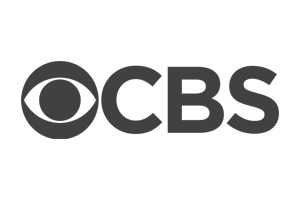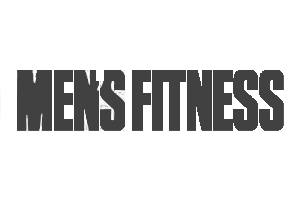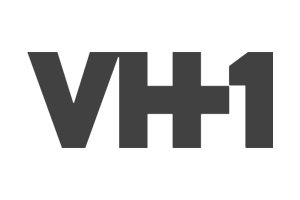Hi, I’m April Beyer. For more than 25 years, I’ve been a relationship coach, matchmaker, and now a female motivational speaker focused on empowering others to connect authentically in both their personal and professional lives.
Through my work, I’ve seen firsthand the unique challenges and incredible strengths women bring, especially in leadership roles.
I’m passionate about helping women break through the barriers that hold us back so that we can lead with confidence, authenticity, and purpose.
The path for women in leadership has seen remarkable progress, yet it’s still lined with challenges. Even as we break new ground and achieve unprecedented influence, systemic barriers keep us from realizing our full potential in the workplace.
These challenges, however, are manageable. We can overcome them with clear strategies, a dedicated effort, and a commitment to empowerment.
Empowering women in leadership isn’t just about filling seats at the table; it’s about creating environments where we can lead authentically and effectively and, most importantly, to find balance and harmony for personal and professional success.
I’ll explore strategies for dismantling the barriers we face in leadership, building our resilience, and harnessing the unique strengths that we, as women, bring to the workplace.
The Current State of Women in Leadership
While women have made significant strides in leadership, the numbers reveal a persistent gap. Globally, women hold about 29% of senior management positions. Although this figure has gradually increased, it still needs to be more true equality.
Our representation is even lower in industries like technology and finance, underscoring the ongoing fight for gender parity. The gender gap in leadership is more than just numbers; it reflects deep-seated biases that continue to limit our progress.
Take Kathy, a client who was general counsel for a firm in NYC. Despite her success, she felt isolated and lonely, keeping her personal life separate to maintain authority at work. This included family matters, aging parents, and her desire to find love and start a family. She was living her life in two separate tracks. She came to me in tears, shattered and unsure of what to do.
The compartmentalization of her life was finally taking a toll on her well-being, and it started negatively impacting her work. I encouraged her to embrace vulnerability and let her team see her authentic self. I reminded her that she needed to bring her humanity to the office.
Contrary to popular belief, this doesn’t take more time out of the workday. That’s an old and tired rule from long ago when women were asked to leave themselves behind to get ahead. Two weeks later, she returned to my office glowing with positivity, telling me how her business flourished simply because she allowed herself to connect on a deeper level with her team.

Three Strategies for Breaking Barriers
If knowledge is power, then focusing on learning is the fastest way to break down a barrier. We must learn how to connect, get support, and continue developing our skills to have holistic success.
1. Building a Strong Network
Networking is more than just a buzzword; it’s the bedrock of professional growth and influence. For us, building and nurturing a strong network within and outside our industries is essential. Typically, women excel at creating community, but this can get lost in the shuffle of life, work, and love. It’s about creating meaningful connections that open doors, provide support, and offer fresh perspectives. Having a trusted community to go to when you’re feeling the pressure can do wonders for self-esteem and stress levels.
To expand your network, actively engage in industry events, seek out diverse professional groups, and never hesitate to reach out to others who inspire you. It requires your courage and vulnerability to build your network in the manner I am referring to. I’m not discussing business on your time off or handing out your card at mixers. I’m referring to actively participating and creating a safe supportive space. A group of people who allow you let your hair down, share, relax, and be authentically YOU. When confronted with a barrier, it’s essential to have an outside team rallying around you and beside you.
2. Mentorship and Sponsorship
Mentorship and sponsorship are critical components of career advancement. A mentor offers guidance, shares experiences, and helps navigate challenges, while a sponsor actively advocates for our growth and success. It’s crucial to seek mentors who align with your career goals and values and to identify sponsors who can champion your advancement. Leverage these relationships by setting clear goals, being open to feedback, and actively participating in your own development journey.
For me, I seek mentors who remind me of my purpose and never let me forget the passion that brought me to my career. My client, Kathy, is in a completely different industry from mine. And yet, my mentorship was the key to finding her footing at work. I simply gave her guidance on how to express herself fully, stand up for herself in a clear, concise way, and offer her tools to communicate on a higher level.
3. Continuous Learning and Development
Continuous learning is non-negotiable in our rapidly evolving workplace. Staying updated with industry trends, honing new skills, and pursuing further education are key to maintaining relevance and competitiveness in leadership roles. Seek leadership programs, workshops, and certifications aligning with your career aspirations. Embrace lifelong learning as a strategy to break through barriers and lead confidently and competently.
Fostering Resilience and Confidence
I see many female leaders utilizing the wrong tools for resilience. Resilience isn’t about toughing it out at all costs. It’s about developing your core, honoring your thoughts, values, and feelings, and knowing yourself inside and out.
Developing a Growth Mindset:
Resilience starts with how we perceive challenges. It’s vital to embrace difficulties as opportunities for growth. A growth mindset helps us see failures not as setbacks but as essential lessons. Techniques like reframing negative thoughts, setting realistic goals, and practicing self-compassion are key to cultivating this resilient mindset.
Overcoming Imposter Syndrome:
Imposter syndrome is a common experience among us, where self-doubt creeps in despite evident success. Overcoming this requires us to recognize and challenge our inner critic, celebrate our achievements, and surround ourselves with supportive peers who reinforce our worth and capabilities. I am often criticized when I have the occasional self-doubt, but as a female leader who has built my resilience and confidence, I allow myself to explore those doubts as they serve a purpose.
They allow me to look in the mirror and embrace my faults, but my core confidence reminds me that I’m worthy of my title and position. In fact, I’ve built a technology company that required me to look at all angles of potential failure in order to ensure success and outcome.
We cannot run from negative thoughts that arise from time to time. Our only job is to recognize their existence and gently brush them aside when we’re empowered with self-knowledge and experience. You’re human, after all. Bring all of yourself to everything you do.
Self-Care and Work-Life Balance:
The demands of leadership can be overwhelming, making self-care and balance essential. Prioritizing mental and physical health isn’t just beneficial—it’s necessary for sustained success. Setting boundaries, practicing mindfulness, and carving out personal time are critical strategies that ensure we lead effectively without sacrificing our well-being. A big part of this is in your ability to vocalize your needs and requests. A fulfilling life outside of work is paramount to your overall success. Remember, it all works together or it doesn’t work at all.
Leveraging Your Unique Strengths
Communication Skills
As women, we possess an innate ability to communicate effectively—an invaluable strength in leadership. We can lead with clarity and understanding by harnessing active listening and empathy, fostering environments where every voice is heard and valued. I cannot think of a higher form of leadership and one that can transform any workplace.
Emotional Intelligence
Emotional intelligence is a game-changer in leadership. We can leverage this skill to navigate complex workplace dynamics, manage teams with compassion, and make informed decisions. Real-life examples show that leaders who embrace emotional intelligence create more cohesive and motivated teams. This requires your courage and vulnerability as you set the tone for the communication. If you’re transparent, you’ll light the way for others to do the same.
Inclusive Leadership
Leading with inclusivity isn’t just beneficial—it’s essential. By prioritizing diversity and inclusivity, we create work environments that empower others and drive innovation. Strategies like fostering open dialogue, recognizing diverse talents, and encouraging collaboration ensure that all team members feel valued and motivated to contribute their best. The sensitivity within women is a gift. It offers us this ability to see the bigger picture and lend a hand to someone who might not have as strong of a voice.
Create a Culture of Inclusion To Break Down Barriers
Advocate for Policy Changes: As women leaders, we hold the power to influence policies that drive gender equality in the workplace. Advocating for changes like flexible working arrangements and equitable parental leave sets the stage for a more inclusive environment. These policies aren’t just beneficial—they’re necessary for leveling the playing field and enabling us to thrive in leadership roles.
Support Other Women: Uplifting each other is crucial. When we mentor, sponsor, and advocate for one another, we collectively dismantle barriers that have long held us back. By sharing experiences, offering guidance, and opening doors for others, we create a ripple effect of empowerment across our organizations.
Challenge Gender Bias: Unconscious bias often lurks beneath the surface, subtly influencing decisions and dynamics. As leaders, it’s our responsibility to recognize and challenge these biases. Whether it’s calling out gendered assumptions or promoting unbiased hiring practices, we must take active steps to create a fairer, more equitable workplace. When organizations commit to minimizing gender bias, they lay the foundation for true inclusivity and lasting change.
Conclusion
In this journey, I’ve explored strategies for breaking barriers, building resilience, and leveraging our unique strengths to empower women in leadership. From advocating for policy changes to fostering a culture of inclusion, each step is crucial in creating a more equitable workplace.
I urge you to take these strategies to heart—apply them in your career, advocate for them within your organization, and support others in doing the same. Change begins with inspired action.
Empowering women in leadership isn’t just about individual success; it’s about shaping a future where diversity and inclusivity are the norm. When we rise, we pave the way for a brighter, more equitable future in the workplace and beyond.






















